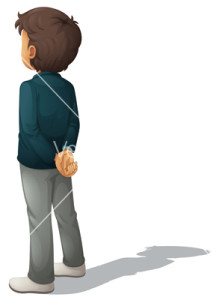 You know who they are – those people who command a room with their supreme confidence. They simply seem to know exactly what to do in every situation, to own the room and everyone in it. Perhaps you’re one of them, or maybe you would like to be, or would like the child you’re raising to be. So what constitutes confidence, and how to you get some, on command?
You know who they are – those people who command a room with their supreme confidence. They simply seem to know exactly what to do in every situation, to own the room and everyone in it. Perhaps you’re one of them, or maybe you would like to be, or would like the child you’re raising to be. So what constitutes confidence, and how to you get some, on command?
Napoleon Hill, who famously studied successful people, outlined 5 steps to self-confidence. In a nutshell, his steps are:
1) Have a definite purpose in life, then relentlessly pursue action towards attainment
2) Think about the person you were meant to become (for 30 mins a day), knowing that positive thinking creates future physical reality
3) Using trigger words, practice the habit of demanding self-confidence of yourself, for 10 mins each day
4) Write down your life’s goal, then keep trying until you are self-confident enough to reach it
5) Repeat positive affirmations daily until they saturate your thoughts and actions, making you more self-reliant, confident and successful
Much of his wisdom, first published in 1928, is not far off the mark of the same things being touted today. Confidence, and how to get it, apparently hasn’t changed much in 85 years.
CONFIDENCE BUILDING TECHNIQUES
- Keep a confidence journal (i.e. write it down)
- Maintain confidence practice calendar with exercises and milestones for progress checks and positive reinforcement of positive behavior (i.e. practice positive thinking exercises)
- Visualize/rehearse/develop a trigger (i.e. anchor a trigger movement to have confidence on command, to fire off whenever needed)
- Program yourself (i.e. develop a ritual that becomes habitual, and eventually becomes part of you)
- Practice affirmations in a mirror [saying “you” not “I”]
- Develop the habit of outcome based thinking – visualize your success ahead of time (i.e. positive thinking becomes physical reality)
- Create positive successful “memories” (once created, they become a resource to call upon)
- Do an activity that is far outside your comfort zone [you can do anything you choose]
- Borrow some confidence from someone you admire – model their behavior, act like they act
- Imagine and write down where you’d like to be in five years [family, work, leisure time, friends, finances, etc.] (i.e. write down specific goals then relentlessly pursue them)
There you have it – a solid formula for achieving success with confidence!
COMMUNICATION TAKEAWAY: Building confidence does take a bit of work, like anything worth having does, but practice will yield results. Not only will you build self-confidence, you will also communicate that confidence outward, which magnifies its effects exponentially; the more you express it externally, the greater it grows internally. This is not about being boastful or obnoxiously egotistical – this is true confidence that comes within and needs no big show. You can become that confident person who is just supremely comfortable with all aspects of who you are.









